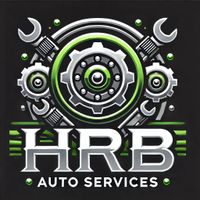
Coolant Change in Gillingham
Instantly compare coolant change deals from garages in Gillingham & book online
Instantly compare coolant change deals from garages in Gillingham & book online
How to book online

ENTER
your vehicle reg & post code.

COMPARE
instant prices for your MOT, service or repairs

BOOK
your preferred date & time in 1 step.

NO PAYMENT
taken - only when the work is complete*
*some mobile technicians will contact you prior to your appointment to take payment in advance.
Mackenzie and Sons Automotive Ltd
Physical Garage
Unit 3c Old Lidsing Road, Lidsing Road, Gillingham, ME7 3NH
About Us
We offer a wide range of services. Everything from MOTs and routine automobile servicing to repairs, diagnostics, and air conditioning services for all cars and light commercial vehicles. Also, we provide incredibly competitive pricing on high-quality tyres and exhausts. Please feel free to request an estimate for any work you require we’d be delighted to help. If you have broken down, don’t worry our local call-out and breakdown service is reasonably priced.
Coolant Change£60
5 (3 reviews)

HRB AUTO SERVICES
Mobile Mechanic
9 Kenilworth Drive, Gillingham, ME8 9DP
About Us
Mobile mechanic From routine maintenance to mot failures With a mind set to keeping you on the road I offer a mobile service to work around your needs With over 20 years experience in the motor trade from working on cars to light commercial vehicles Routine maintenance services Fleet maintenance 6 weekly inspections 2ltr transit wet belts Cambelts Diagnostic Mot failures All works undertaken Covering Medway Kent and surrounding areas
Coolant Change£60
4.98 (12 reviews)

Olistone Garage
Physical Garage
Unit 3, Bredgar Road, Gillingham, ME8 6PL
About Us
Reliable & Fast MOT Testing in kent Looking for a professional and trustworthy MOT testing centre in Kent We provide fast, reliable, and affordable MOT tests to ensure your vehicle meets all legal and safety requirements. With over 15 years of experience, we guarantee a smooth and hassle-free MOT process for cars, light vans, and small minibuses (Class 4 MOTs). Book Your MOT Now!
Coolant Change£60
4.98 (12 reviews)
Reviews Summary
AI Generated
Customers repeatedly praise the garage for fast, same‑day MOTs and services, friendly and professional staff, and competitive, affordable pricing. Reviewers highlight efficient, thorough workmanship, honest diagnostics and helpful customer service — one even mentions a nearby McDonald’s for a short wait. There are virtually no recurring complaints in this sample, with feedback overwhelmingly positive.

Medway MOT Centre Ltd
Physical Garage
5 Cloverlay Business Park, Canterbury Lane, Rainham, ME8 8GL
About Us
We make it simple and fast with while you wait MOT's. With a friendly female receptionist, take a seat in our reception area, grab a free drink and leave the rest to us. Toilet facilities are available. If we do have to fail your car we always show you why. Not that we want your car to fail, any minor adjustments are carried out by our technicians FREE. We are not in the business of failing cars to get repair work!
Coolant Change£60
4.98 (15 reviews)
Reviews Summary
AI Generated
Customers are overwhelmingly positive, repeatedly praising friendly, professional and helpful staff, quick turnarounds, clear communication and little extras such as free Wi‑Fi, coffee and a comfortable waiting area. Reviewers also note fair pricing and an accommodating attitude (helping customers get home or prioritising keyworker repairs); only one reviewer mentioned a booking mix‑up that was handled promptly, so administrative hiccups appear rare.
What is coolant?
Coolant is a specially-formulated chemical liquid, commonly known as antifreeze, that circulates through a car’s engine. It removes excess heat from a car’s engine by passing it through the car’s radiator. Furthermore, the solution contains inhibitors that protect the metal, plastic and rubber in the cooling system from corrosion. And, as the name antifreeze suggests, it also doesn’t freeze up in bitterly cold conditions, so it plays an important role in a car all year long.
Why is changing the coolant important?
You should book a coolant change frequently, at least every 2 years. Low coolant can cause overheating, which would have serious implications for other components on the car. Even though coolant can leak and evaporate over time, in many cars it often looks as though the coolant never needs changing because its level seems to stay the same. However, draining and flushing the coolant system, including the radiator, at least once a year is important. Flushing pushes out all the old coolant, debris from corrosion and scale. If left in the engine, it may become clogged up, potentially causing extensive damage.
How is a coolant change done?
Before a mechanic drains the cooling system, he might add coolant cleaner to the coolant and then start the engine, depending on what the manufacturer specifies. After the car has run for a while, he would turn it off and drain it. He would then add water to flush it and drain it again, twice, before finally putting in the fresh coolant.
What are the possible signs that a car needs a coolant change?
- When a car’s maintenance or engine temperature light illuminates on its dashboard.
- If the car’s engine starts running at a higher temperature than usual, signifying that the engine is overheating.
How long does a coolant change take?
- Approximately 1 hour.
How much does a coolant change cost?
- Up to £50.
How to be a better driver
Whether you’re driving in Gillingham or further afield, think about road user etiquette. Showing respect for other road users makes driving more pleasant for you and safer for everyone. For example, if you have to make a last minute change of lane, make your request to change clear to the driver who will need to let you in - and signal your thanks if they do. Be ready to abandon the change of lane if they won’t play ball - your safety (and that of other drivers and pedestrians) is more important than getting to your destination in the shortest time possible. When the position is reversed and a driver asks your permission to change lanes, allow them to as long as it is safe. If you get frustrated, avoid using your horn - it won’t improve matters and might make them considerably worse.